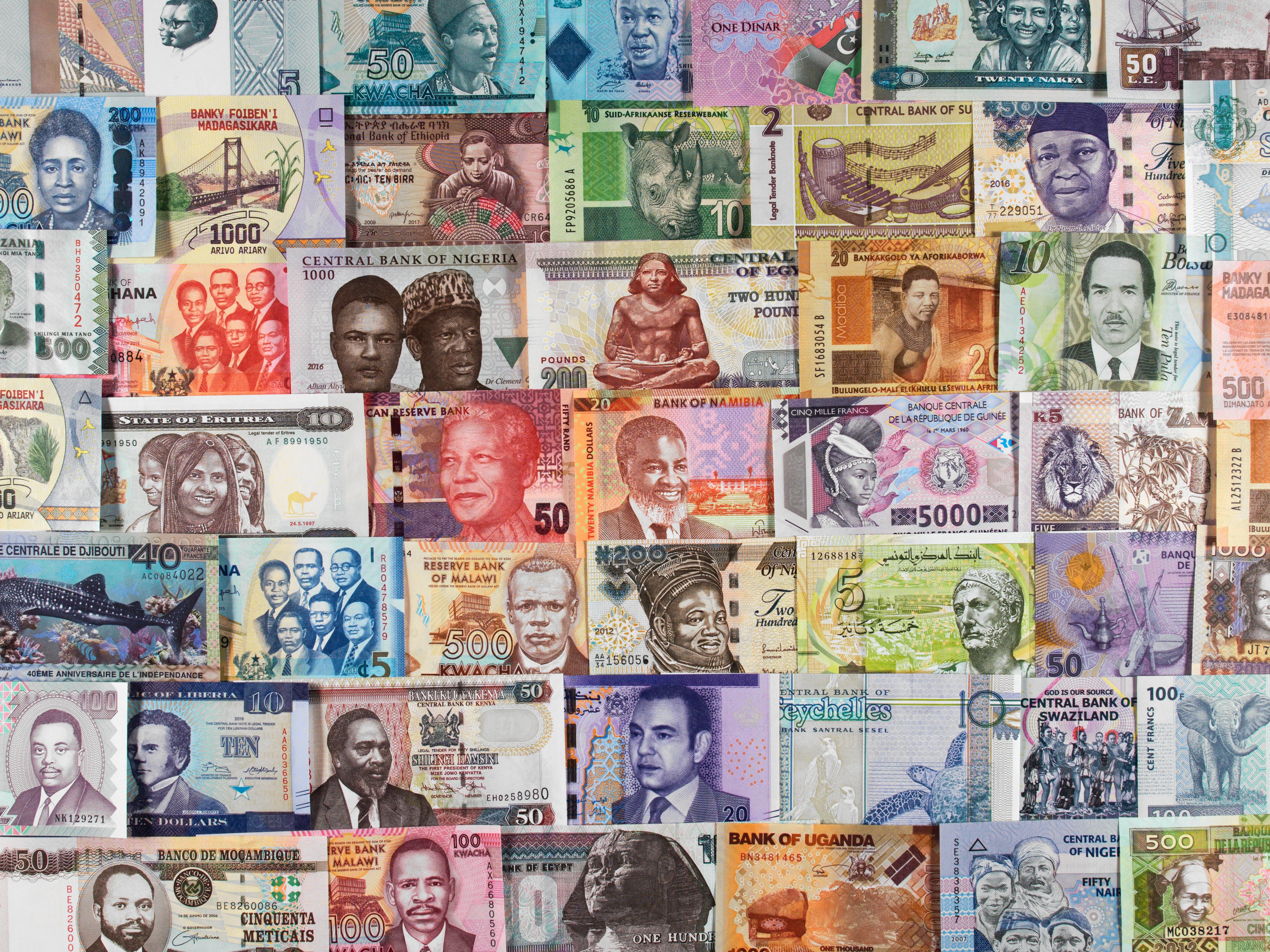As the global economy sinks into another period of crisis, one indicator is shooting upwards: the value of the US dollar. With around half of all international trade invoiced in dollars, a stronger greenback hurts consumers across the world – including in Africa – that use dollars to pay for imports.
The dollar’s rise is partly down to the hawkish stance taken by the US Federal Reserve, which has raised interest rates more aggressively than central banks in other major economies. The fact that the greenback is traditionally seen as a “safe haven” asset by investors in times of economic volatility has further strengthened the dollar.
It is not just Africa feeling the pain. The British pound has fallen to its lowest level against the dollar since 1985 and the Japanese yen is at its weakest since 1998. The euro, meanwhile, dropped below parity with the dollar for the first time since 2002 in late August. The euro’s depreciation directly affects the 14 African countries that use the CFA franc, which is pegged to the European single currency at a fixed rate.
Investor confidence
The worst hit currency on the continent is the Ghanaian cedi, which has lost 40% of its value against the dollar so far in 2022, according to data on indicative rates supplied by Refinitiv. Ghana’s predicament reflects how investor confidence has been hit by the country’s fiscal crisis, which has left Accra seeking an IMF bailout. Fitch downgraded Ghana’s long-term foreign-currency issuer default rating to CCC in August, signalling that “default is a real possibility”.
The South African rand is another major currency under pressure amid faltering investor confidence. The rand has been on a declining trend against the US dollar for several years and has depreciated by 9% so far in 2022. Irmgard Erasmus, senior financial economist at Oxford Economics Africa, says a “very, very weak growth backdrop” is at the root of the currency’s struggles. Load shedding is among several factors that have contributed to consistently anaemic growth rates.
Erasmus says that the South African Reserve Bank (SARB), which has already raised interest rates four times this year, is under pressure from financial markets to maintain a hawkish position. She warns that lower-than-expected rate increases will lead to “punishment” for the rand.
This puts the SARB in a difficult position, however, given that inflation already appears to have peaked. In the absence of a strong domestic justification for a hawkish policy, SARB “can’t tighten policy too aggressively, purely to manage pressure on the rand,” Erasmus says.
Import dependence
African countries that lack a strong commodity export base are in an exposed position. The Kenyan shilling, for example, has seen its indicative value decline by 6% so far this year. Amid a weak post-Covid economic recovery and an ongoing drought, Kenya’s horticulture sector – which the country relies on for generating foreign exchange – remains in the doldrums.
Exchange rate volatility has “hit our country big, because we are a net importer”, says Job Wanjohi, head of policy, research and advocacy at the Kenya Association of Manufacturers. Wanjohi reports that the last year has seen prices “shoot up”, hitting margins for manufacturing businesses – which he says typically import around 80% of the raw materials and intermediate goods used in their products.
Kenya is among many African countries that are particularly vulnerable because of its dependence on imported fuel. Exchange rate volatility means that Kenya has suffered a double whammy – the cost of fuel has increased both because of rising wholesale prices and because the Kenyan shilling has depreciated. Wanjohi notes that manufacturing businesses are now contending with increased transport costs and are often paying more to run diesel generators.
Nigeria’s dollar crisis
One country that should be bucking the trend is Nigeria. As a major producer and exporter of oil, economic theory would suggest that 2022 should be a boom year for Africa’s most populous country. In reality, however, the opposite is true. Declining oil production – following years of under-investment and increasingly rampant theft and vandalism – and the massive cost of subsidising imports of refined petroleum products have contributed to a growing economic crisis.
Nigeria’s complicated system of multiple exchange rates makes it difficult for businesses and individuals to access dollars, particularly in times of economic stress. Running parallel exchange rates is a “dangerous game”, says Zuhumnan Dapel, senior fellow at the Nigerian Economic Summit Group. He notes that the system allows powerful figures to access currency from the Central Bank of Nigeria and sell it on the black market at “exorbitant rates”.
Amid the rising cost of imports and the scarcity of dollars, Nigeria’s official inflation rate rose above 20% in August for the first time in 17 years. “It’s definitely a factor that would deter investors,” says Janet Ogabi, senior research analyst at consulting firm Tellimer.
She cites the example of Emirates, which announced last month that it was suspending flights to Nigeria due to its inability to repatriate currency. Whether Nigeria’s next president, who will be elected next year, will reform the dysfunctional exchange rate system is the “million-dollar question” for the country, Ogabi says.
Zambia shows a way out?
Of all Africa’s major currencies, only the Zambian kwacha has had a good year against the dollar, gaining 6% so far in 2022. The main lesson from Zambia is that the government of Hakainde Hichilema has been “very successful in establishing policy credibility” during its first year in power, says Erasmus. She praises the government’s efforts to rebuild transparency – a vital factor in convincing the IMF to disburse a $1.3bn loan.
But Erasmus cautions that others will struggle to follow Zambia’s example. “The Zambian case is quite unique,” she says. Indeed, to some extent, the kwacha had already bottomed out following an extended period of economic mismanagement that culminated in a sovereign default in 2020. Erasmus also warns that difficult debt restructuring negotiations with creditors and disappointing copper production figures are likely to weigh on the currency over the coming months.
Indeed, all African countries face a difficult external environment. Weak growth in China and even weaker growth in developed markets means that demand for African exports is likely to remain subdued for the foreseeable future. For African policymakers seeking to manage currency risks, there is no easy way out of the cycle of crisis.
Want to continue reading? Subscribe today.
You've read all your free articles for this month! Subscribe now to enjoy full access to our content.
Digital Monthly
£8.00 / month
Receive full unlimited access to our articles, opinions, podcasts and more.
Digital Yearly
£70.00 / year
Our best value offer - save £26 and gain access to all of our digital content for an entire year!
 Sign in with Google
Sign in with Google 



